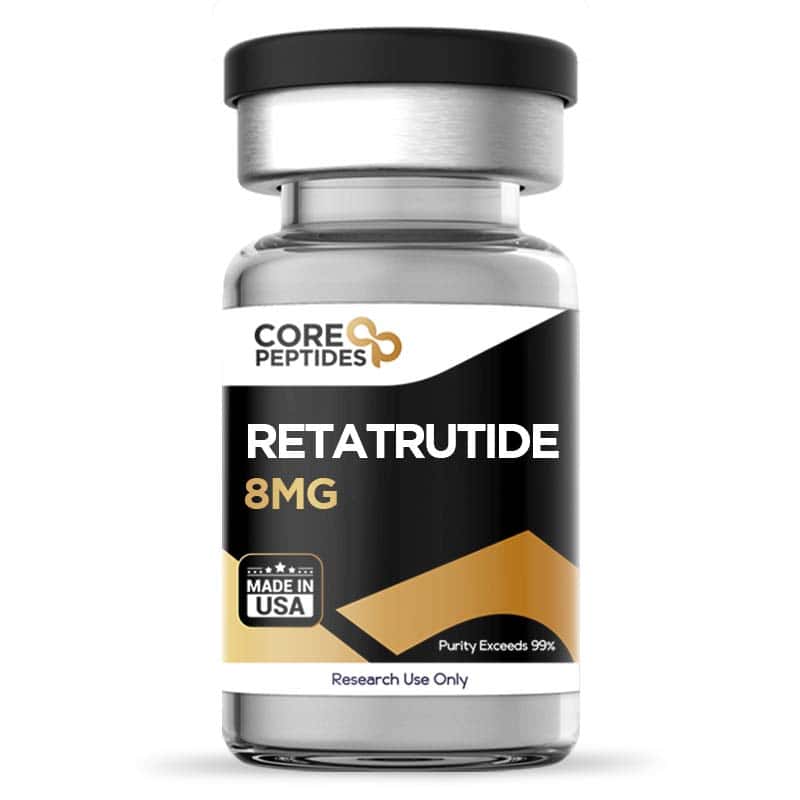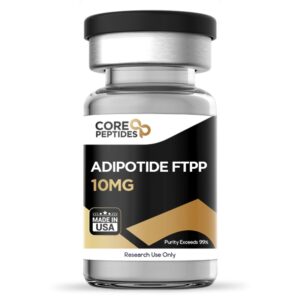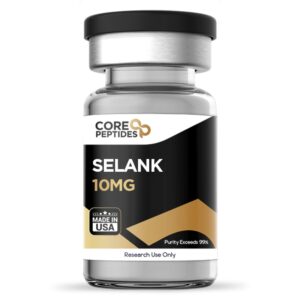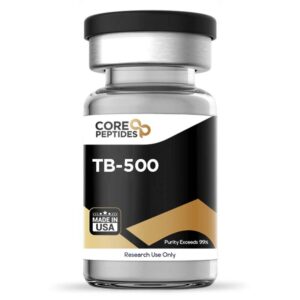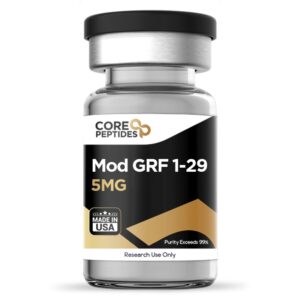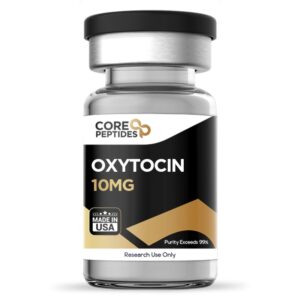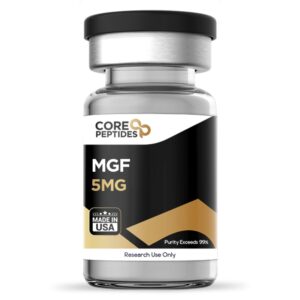Retatrutide (8mg)
$215.00
Size: 8mg
Contents: Retatrutide
Form: Lyophilized powder
Purity: >99%
SKU: P-RETATRUTIDE-8
FREE Shipping on $200+ orders
FREE Bacteriostatic Water (30ml) on $200+ orders
Discount per Quantity
| Quantity | Discount | Price |
|---|---|---|
| 5 - 8 | 5% | $204.25 |
| 9 + | 10% | $193.50 |
Retatrutide Peptide
Retatrutide, identified also by its code LY3437943, represents a synthetic peptide, which research indicates functions as a triple agonist. This compound comprises a 39-amino-acid sequence, engineered as an analog to GIP, with additional affinity observed towards the glucagon-like peptide-1 (GLP-1) receptor and the glucagon (GCG) receptor. Furthermore, Retatrutide has been chemically modified with a C20 moiety, purportedly to extend its half-life to approximately six days.
Chemical Makeup
Molecular Formula: C223H343F3N46O70
Molecular Weight: 4731.55 g/mol
Other Known Titles: LY3437943, NOP2Y096GV
Retratrutide Research
Research in cell cultures and murine models has suggested the potential affinity of Retratrutide to interact with the GLP-1 receptor. The GLP-1 receptor, classified within the B family of G protein-coupled receptors, primarily seems to engage the cAMP-PKA pathway in the pancreas. The interaction between GLP-1 and its receptor is believed to activate adenylate cyclase (AC), which may promote the conversion of ATP into cyclic adenosine monophosphate (cAMP), thereby potentially raising cAMP levels. This increase might activate protein kinase A (PKA) and Rap guanine nucleotide exchange factor 4 (RAPGEF4, also referred to as EPAC2). It is hypothesized that the activated PKA would close the ATP-dependent K+ channels and depolarize the cell membrane, while possibly activating the voltage-dependent Ca2+ channels, leading to Ca2+ inflow and the production of action potentials. Moreover, PKA may facilitate the release of Ca2+ by activating inositol triphosphate (IP3). The activated EPAC2 might also activate Ras protein 1 and phospholipase C, potentially engaging the IP3 and diacylglycerol (DAG) pathways and enhancing the release of Ca2+. Cumulatively, these pathways may increase the intracellular Ca2+ levels, potentially fostering mitochondrial ATP synthesis and promoting insulin release via exocytosis.
GCG receptor activation by agonists like Retatrutide may potentially induce hepatic futile cycling. Furthermore, Retatrutide’s action on the GCG receptors might extend to augmenting the thermogenic capacity by potentially leveraging the energy-wasting activities in brown adipose tissue (BAT) cells. The activation of BAT by Retatrutide may increase rate through the uncoupling protein 1 (UCP1), which possibly dissipates the proton gradient to release energy as heat.
Retatrutide peptide is available for research and laboratory purposes only. Please review our Terms and Conditions before ordering.
Not for human consumption.
References:
- Folli F, Finzi G, Manfrini R, Galli A, Casiraghi F, Centofanti L, Berra C, Fiorina P, Davalli A, La Rosa S, Perego C, Higgins PB. Mechanisms of action of incretin receptor based dual- and tri-agonists in pancreatic islets. Am J Physiol Endocrinol Metab. 2023 Nov 1;325(5):E595-E609. doi: 10.1152/ajpendo.00236.2023. Epub 2023 Sep 20. PMID: 37729025; PMCID: PMC10874655.
- Jakubowska A, Roux CWL, Viljoen A. The Road towards Triple Agonists: Glucagon-Like Peptide 1, Glucose-Dependent Insulinotropic Polypeptide and Glucagon Receptor - An Update. Endocrinol Metab (Seoul). 2024 Feb;39(1):12-22. doi: 10.3803/EnM.2024.1942. Epub 2024 Feb 14. PMID: 38356208; PMCID: PMC10901658.

